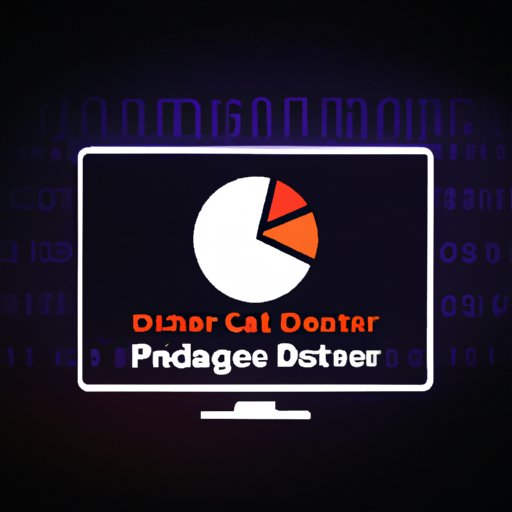Introduction
Are you tired of your slow computer? Do you want to learn how to make it run faster? Making your computer run faster can be done in just a few simple steps. This article will provide an overview of what “making a computer run faster” means and then describe five steps to take to make it happen.
Defragment Your Hard Drive
The first step to making your computer run faster is to defragment your hard drive. Defragmentation is the process of reorganizing the files and data stored on your hard drive so that they are easier for your computer to access. When files and data become scattered across your hard drive, they take longer to locate and open, which slows down your computer.
To defragment your hard drive, you will need to use a program that comes with your operating system. On a Windows computer, this program is called Disk Defragmenter. To access it, go to Start > All Programs > Accessories > System Tools > Disk Defragmenter. Once you have opened Disk Defragmenter, select the drive you want to defragment and click the “Defragment” button. The process may take several hours, depending on the size of your hard drive.
Update Your Operating System
Another important step to making your computer run faster is to keep your operating system up to date. Operating system updates often include fixes for bugs and security vulnerabilities that can slow down your computer. To check for updates, go to the “Settings” menu in your operating system and look for the “Updates” section. Here, you should see the option to check for updates and install them if available.
Updating your operating system also has the added benefit of giving you access to new features and improved performance. For example, if you are using an older version of Windows, you may experience a noticeable speed increase after updating to the latest version.

Uninstall Unused Programs and Apps
Another way to make your computer run faster is to uninstall any programs or apps that you are not using. These programs and apps can take up valuable storage space and processing power, slowing down your computer. To identify which programs and apps you are not using, go to the “Programs and Features” section in your Control Panel and look for any programs or apps that you do not recognize or do not use anymore.
Once you have identified the programs and apps that you want to uninstall, right-click on them and select “Uninstall”. This will remove the program or app from your computer, freeing up storage space and processing power.
Disable Startup Programs
Startup programs are programs that are automatically launched when you start your computer. While some of these programs are necessary for proper operation, others are unnecessary and can slow down your computer. To disable startup programs, press the Windows key + R to open the Run dialog box. Then type “msconfig” and press Enter. In the System Configuration window, switch to the “Startup” tab and uncheck the boxes next to the programs you want to disable.
You can also use third-party software to manage your startup programs. Popular tools like CCleaner and Autoruns can help you identify and disable unnecessary startup programs.
Reduce Visual Effects on Your PC
Visual effects are special graphical effects that are used to make your computer look more attractive. However, these visual effects can also slow down your computer, especially if you are using an older or lower-end machine. To reduce the impact of these visual effects, go to the “Performance” section in your Control Panel and switch to the “Visual Effects” tab.
Here, you will find a list of visual effects that you can enable or disable. You can also choose to let Windows automatically adjust the visual effects based on the performance of your computer. Select the option that best suits your needs and click “Apply” to save your changes.
Conclusion
Making your computer run faster is easy if you know what to do. By following the five steps outlined in this article, you can significantly improve the speed and performance of your computer. Start by defragmenting your hard drive, then update your operating system, uninstall unused programs and apps, disable startup programs, and finally reduce visual effects on your PC. With just a few simple steps, you can make your computer run faster and more efficiently.


